- Apply
- Visit
- Request Info
- Give



Published on May 06, 2024
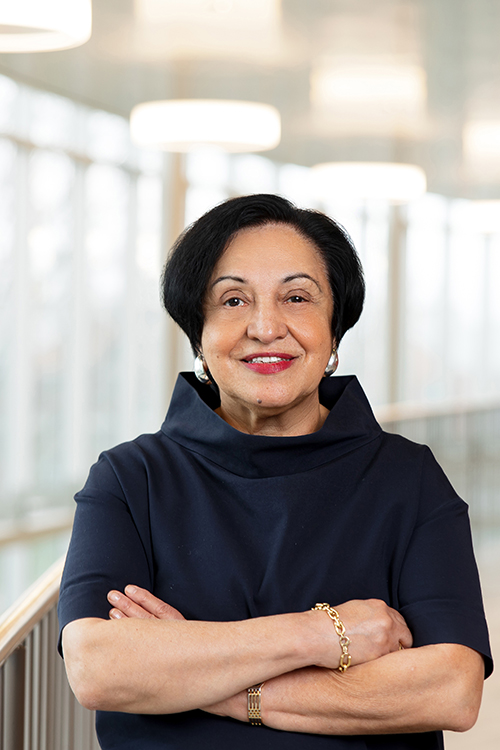 Thursday, Aug. 17, 2006, was a sunny summer day in Willimantic, CT. It was also the occasion for Willimantic’s monthly “Third Thursday” street festival, and took place only a week after Elsa Núñez had assumed the reins as the sixth president of Eastern Connecticut State University.
Thursday, Aug. 17, 2006, was a sunny summer day in Willimantic, CT. It was also the occasion for Willimantic’s monthly “Third Thursday” street festival, and took place only a week after Elsa Núñez had assumed the reins as the sixth president of Eastern Connecticut State University.
“I will never forget that day,” said Núñez. Third Thursday cordoned off several blocks of Main Street in downtown Willimantic and the area was transformed into a carnival, with street vendors, musicians, face painting, food trucks, mimes on stilts and other entertainment. Among the many people the president met that day was a woman from her hometown of San Sebastián, Puerto Rico. The woman thanked Núñez for coming to Eastern and Willimantic. “It was as if I was her relative. I realized in a much deeper way that I belonged in this community. I was not aware of Willimantic’s connections to Puerto Rico when I took the job.”
More than one-third of Willimantic’s population is Latino today, due to Puerto Rican workers recruited by Willimantic companies and later immigration. “I was someone who looked like them. They were proud and joyous. I realized what my role in the community could be. My presidency had to include a strong presence in the community. Eastern students respected and felt part of Willimantic, and the town, in turn, was respectful and proud of the University.”
When Núñez was eight, her father moved their family from the rolling hills of western Puerto Rico to the promise of opportunity on the mainland, where they settled in Newark, NJ. The family knew no English, and Núñez learned to read the new language from the newspaper’s sports pages. There were no bilingual programs back then. Her father and mother both worked in factories to support their family, her father as a foreman at the Fedders air conditioning factory.
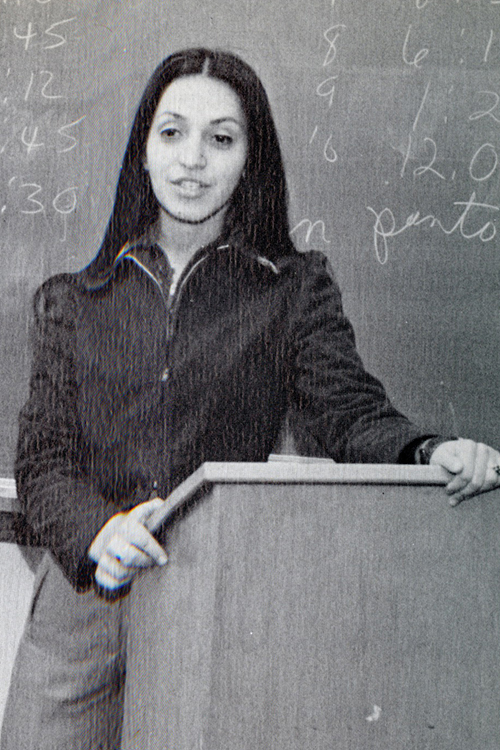
With the sacrifice and support of her parents, Núñez honed her academic skills at an all-girls Catholic high school. The only Latina at Montclair State College, Núñez got her college career off on good footing thanks to her freshman English professor, Morris McGee, a Korean War veteran confined to a wheelchair. With McGee’s personal guidance, Núñez brought her writing up to college standards. With the support of family and friends, Núñez earned her bachelor’s degree at Montclair, later receiving her master’s degree at Fairleigh Dickinson University and her doctorate at Rutgers University.
President Núñez’s first job was at Ramapo College, New Jersey’s public liberal arts college, where she learned the value of a broad-based liberal arts education. Administrative positions in The City University of New York system and later the University of Maine system prepared her the challenges of becoming Eastern’s sixth president in 2006. She was also the first Latina president of a public college or university in New England.
In addition to getting to know the local community and establishing relationships with faculty and staff, President Núñez’s priority was developing a new strategic plan for the University, using the planning process to build trust, consensus and shared values across the campus.
“I believe our first strategic plan (2008–13) was critically important to my presidency,” said Núñez. “It was ambitious but not unrealistic — we ended up meeting 95% of our objectives. One of the most important outcomes was to align our budget with the strategic plan. It pointed to the strategic plan as a compass, directed our spending and depoliticized my presidency.”
Núñez cited a number of elements of the plan that she felt were particularly important to implement, including the consolidation of academic support services into the Academic Success Center; a comprehensive retention program for at-risk students; the increase of faculty positions by 20%; and an increased focus on on-campus, residential life.
“When President Núñez started her first strategic plan, I said to her that she was the right person, with the right tools, at the right time to move Eastern to be highly recognized as a top-tier university,” said Ron Lowy, retired business administration professor and strategic planning co-chair. “She proved to everyone that that was true.”
More than 300 people on campus invested 10,000 hours of their time to forge a plan that reflected Eastern’s mission and laid out a blueprint for collaboration, innovation and progress. The plan also attracted more than $7 million in federal and private grant support. “People worked hard together and saw the results of their work,” said Núñez. “It was a campus-wide effort, not just that of management.”
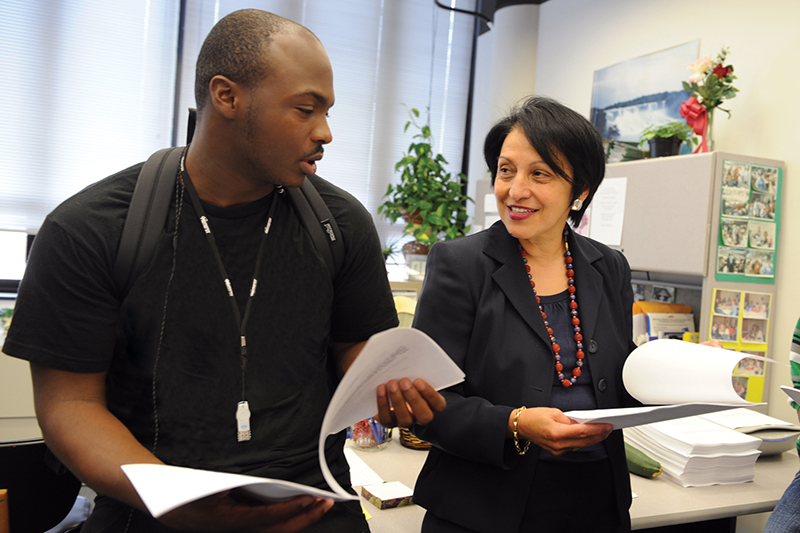
“Richard Jones-Bamman, retired now from the Department of Music, said to me one day, ‘Elsa, we can be elite without being elitist.’ I have taken his message to heart, and I believe it has informed our campus community,” said Núñez. "The faculty and staff really believe in our mission and have embraced expanding educational access in concert with our liberal arts mission; this has been an inspiration to me. We have been able to provide a rigorous undergraduate liberal arts education, coupled with providing access to underserved students.”
The foundation of Eastern students’ education is the liberal arts core, which has recently been restructured to focus more clearly on a finite set of fundamental workplace and life skills. “One of my primary goals was to continue to update the liberal arts core curriculum,” said Núñez. “The faculty spent several years conceiving a more focused core. Now, we have five solid learning outcomes — communication, creativity, critical thinking, ethical reasoning, quantitative reasoning — and a structure that allows faculty to assess student learning while giving students marketable skills that any employer will value.”
The faculty and staff really believe in our mission...We have been able to provide a rigorous undergraduate liberal arts education, coupled with providing access to underserved students.
Another important goal of the president and an objective that continues to be part of the strategic plan is offering academic majors that are responsive to the state’s economy and attractive to today’s students. “The State of Connecticut needs an educated workforce,” said Núñez. “Eastern is playing an active role in preparing our graduates for rewarding jobs that help drive our economy. Our faculty has responded with a lot of hard work in developing curriculum and programs that are leading to fulfilling, in-demand careers.”
Graduates of the health sciences major, now in its 10th year, are going on to careers as doctors, nurses, physical therapists and allied health professionals. The new data science major reflects the growing need for data analytics across all occupations. Other programs developed during Núñez’s presidency include majors in nursing and criminology; concentrations in cognitive neuroscience and exercise and sport science; minors in bioinformatics, medical interpreting in Spanish, cannabis cultivation and chemistry, and genetic counseling; and a master’s degree in applied data science.
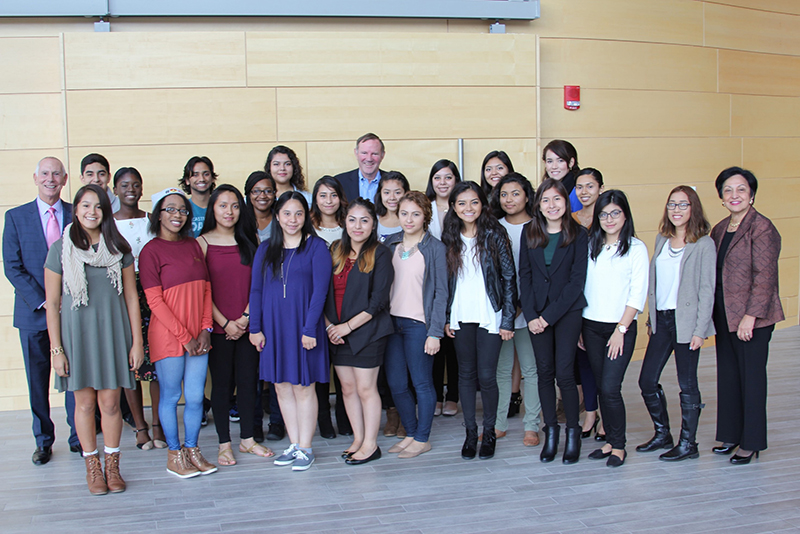
Eastern’s relevant academic majors and strong liberal arts core are grounded by a range of experiential learning opportunities that inform students’ classroom instruction. “What we need is to give students the skills to compete in the job market and to relate their classroom experiences to the workplace,” said Núñez of invaluable out-of-class learning gained through internships, studying abroad, research and service learning. "We provide a liberal arts education practically applied.”
Núñez points to the faculty as Eastern’s strength. “I have great admiration for our faculty. We could not have achieved our academic reputation or increased retention and graduation rates without their work. Their first commitment is to teaching their students, yet they also are judged by their scholarship. It’s inspiring to see our professors go the extra mile.”
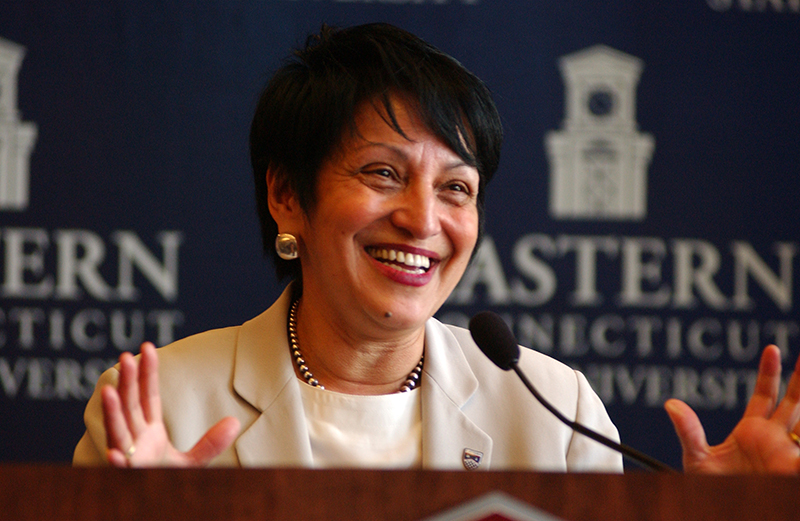
“I believe strongly that access programs cannot just be about providing a doorway into college,” said Núñez. “What happens afterward?” With grants from the Nellie Mae Education Foundation and the U.S. Department of Education, Eastern has been able to build and strengthen its academic support programs with a centralized Academic Success Center located on the ground floor of the library. The center offers peer tutoring, professional advising, career counseling, math/writing centers and more, with most students using one or more services each year.
In addition, an early warning system and predictive modeling have allowed Eastern to institutionalize support for at-risk students, reaching them before crises develop. Most recently, the Office of Opportunity Programs was created to target different groups of students with select interventions. “Each student has different support needs,” she said. “Equity is based on providing those differentiated services.” In the past decade, first-year to sophomore retention at Eastern has increased 10% — from 74% to 84%.
While leading a strategic planning process committed to improving Eastern’s academic reputation was a priority, Núñez also wanted to reach out to students previously left out of the opportunity for a college education. “When I first visited the counseling staff at Hartford Public High School in 2007, I was seeking a pathway to college through which we could support students with potential who, due to life’s circumstances, were not ‘college material.’ The head counselor said he could identify students with ‘grit,’ and we agreed the recipe for success was getting them out of their home environment by having them live and study on our campus.”
The program gained financial support from a variety of sources, including the Hartford Foundation for Public Giving, the Walmart Foundation, the U.S. Department of Justice and others. Ultimately, the Dual College Initiative, as the program was named, had a graduation rate seven times that of all Hartford high school students.

Estela Lopez, a longtime friend of Núñez and former academic vice president for the Connecticut State Colleges and Universities system, facilitated that first meeting at Hartford Public High School. “In that moment I saw once again the real Elsa, not a talker, but a doer who believes in providing opportunities to young people so they can reach their potential and become productive citizens,” she said. “Her words are never empty because she utters them with the conviction of making them become a reality.”
The success of the Dual College Initiative and Eastern’s strong track record for retaining Latino students led to another historic partnership. In 2016, Donald Graham, former publisher of the Washington Post, launched TheDream.US foundation, dedicated to providing financial support to undocumented students from states that limited their ability to receive a public university education.
Eastern became one of the two pilot programs and today is the largest TheDream.US partner, with more than 350 students enrolled as Opportunity Scholars. These students are among the highest achieving groups on campus, with a 97% retention rate and 89% four-year graduation rate. In 2020–21, all four Student Government Association officers were Opportunity Scholars, just one example of their on-campus leadership.
“It makes me very proud that these outstanding students have been able to get a first-class education at Eastern while knowing they could do so in a safe place, given the political climate around immigration,” said Núñez. “They aren’t singled out. They feel safe here. And they have developed emotionally, academically and socially as a result.”
If expanding educational access to students from underrepresented populations has extended Eastern’s reach across the nation, making an impact back in the University’s hometown of Willimantic reflects the president’s personal commitment to family and community. When she arrived at Eastern in 2006, community service was a requirement of residential students but it was not well organized.
We are so fortunate she was here for the past 18 years, bringing about so many positive changes in the community at the same time she has done so much for Eastern students.
David Foster
The 2008–13 strategic plan established the Center for Community Engagement (CCE), which opened in 2009 and coordinates an impressive program of one-time and ongoing service projects ranging from after-school programs to work with local addiction recovery services. Since the CCE’s inception, students have volunteered upwards of 10,000 hours each academic year.
“Elsa has integrated Eastern into the town, with students participating in so many great projects to help meet the needs of our residents,” said local philanthropist and longtime Eastern supporter David Foster. “We are so fortunate she was here for the past 18 years, bringing about so many positive changes in the community at the same time she has done so much for Eastern students.”

Eastern has been a steward of the environment for decades, establishing the Institute for Sustainable Energy in 2001 while implementing energy conservation measures throughout the campus. President Núñez has built on this legacy as she continues to lead by example. Throughout her administration she has actively supported Eastern’s three-pronged approach to sustainability: an academic arm (the Center for Sustainability Studies); a statewide outreach program (the Institute for Sustainability); and sustainability programs on campus through the Green Campus Committee.
In addition to her leadership and active involvement on campus, Núñez has been a national advocate for sustainability on college campuses, as a frequent speaker on the topic and as a member of the Board of Directors of Second Nature, the sponsor of the Climate Leadership Network.
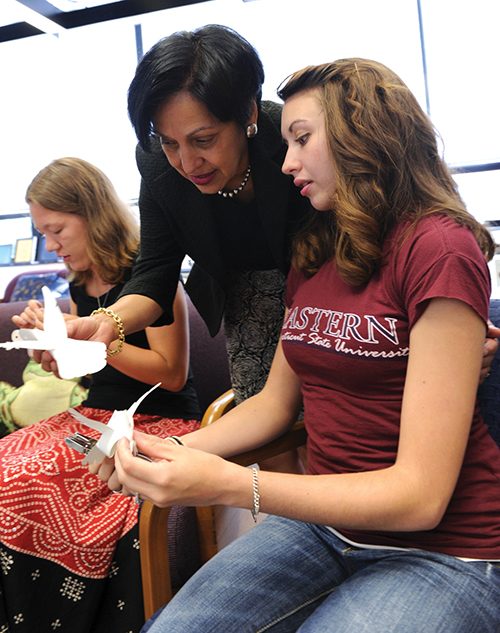
"It is impossible to overestimate the impact that Elsa has had on the higher education sector, and in our case, how she helped lead national efforts to address climate change and sustainability,” said Tim Carter, president of Second Nature. “Her desire to see urgent change is matched only by her understanding that any solution has to be equitable and just. Her ability to do all this with grace, warmth and generosity made Elsa a true inspiration for me, and I’m honored to have had the chance to work alongside her.”
More than 100 courses throughout Eastern’s curriculum now address issues of climate change and sustainability. In addition, on-campus sustainability initiatives range from recycling, composting and a community garden to energy-efficient lighting and food waste management. Five of the University’s buildings have been constructed to the U.S. Green Building Council’s LEED standards, and Eastern’s Climate Action Plan (2020) commits to carbon neutrality by 2030.
Eastern also has been recognized 14 years in a row by the Princeton Review as one of the nation’s “Green Colleges,” a distinction that President Núñez is proud of: “Eastern now is branded as an institution that cares about the environment and about resolving the inequities of climate change.”
Another Eastern tradition is excellence on the athletic field, going back to 1898 when the women’s basketball team won its league championship. President Núñez has again shown her own personal leadership in supporting Eastern athletics, and Division III athletics in general, as the chair of the Little East Conference’s (LEC) Presidents’ Council and later as a member of the national Presidents’ Council of NCAA Division III.
“Both my children were athletes in high school, and I am a big fan of our Warriors,” she said, noting “it was a thrill of a lifetime” being in the stands at the 2022 national NCAA Division III World Series in Cedar Rapids, IA, when the Warriors baseball team won their fifth national title.
Under Núñez, Eastern student athletes have excelled on the field and off while serving their community. Recently the Warriors won the LEC Commissioner’s Cup for the sixth consecutive year for the best overall athletic performance among conference members. Eastern has also won the LEC Presidents’ Cup a record seven times for having the best overall GPA among its student athletes.
Núñez and her Eastern team have certainly been met with challenges, none more demanding than the COVID-19 outbreak. On March 13, 2020, the University sent students home for spring break and hoped for a short reset before returning to on-ground classes in early April. Instead, following safety protocols issued by the governor’s office, the entire campus community went remote for the balance of the semester.
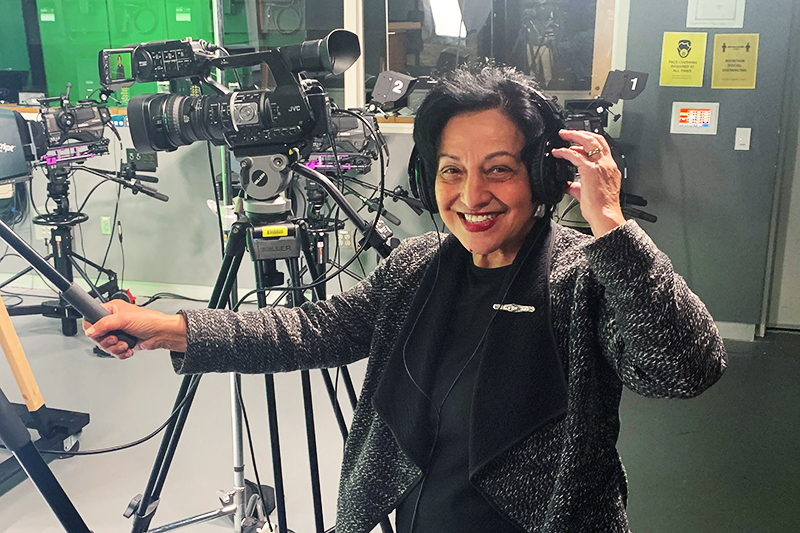
While faculty and students engaged in online learning, President Núñez organized and implemented a special campus-wide task team to facilitate a high level of communication in the new “virtual world” that had been thrust upon the state and country. The COVID campus-wide response team effectively implemented and monitored all safety protocols, including the eventual management of a vaccination program for the entire student body.
In 2020–21, the team continued to coordinate a hybrid campus environment, with systems set up for social-distanced classrooms, weekly student testing, virtual student activities, remote student services such as counseling, and quarantining and caring for students with COVID.
“President Núñez encouraged us to keep our mission at the forefront of our planning,” explained Ken DeLisa, retired vice president for institutional advancement and chair of the COVID Incident Response Team. “We are a residential campus providing a personalized liberal arts experience, and the president wanted to protect and maintain those standards.”
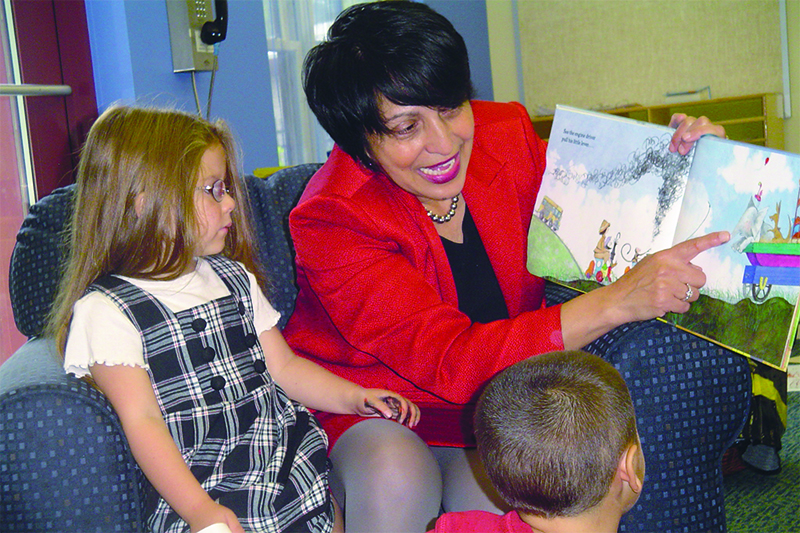
Although state funding and tuition account for much of Eastern’s budget, scholarships for students with unmet financial need are generously supported through the financial assistance of Eastern alumni and friends. “We have worked hard to enlist alumni to support Eastern,” said Núñez, explaining that the success of Eastern alumni, especially in Connecticut, will be a good base for the next president to build on.
The ECSU Foundation, Inc., manages the University’s endowment, which has grown from $4 million to $20 million during President Núñez’s tenure. During her time at Eastern, significant support has come from such regular donors as the Jeffrey P. Ossen Family Foundation and the SBM Charitable Foundation. Major estate gifts include the Dorothy E. Brown estate gift, valued at $4.8 million; the John C. Hicks estate gift, valued at $800,000; and the gifting of the Church Farm Center for the Arts and Sciences by Dorothy and Joseph Zaring, valued at $2.5 million. Scholarship support for students has also grown due to President Núñez’s leadership, growing from $100,000 to $850,000 in fiscal year 2022.
Individual alumni and other donors have also supported the University through the Annual Fund; in fiscal year 2016, 2,478 alumni were among the 4,252 total donors supporting Eastern. For seven straight years (2012–18) total giving topped $2 million annually.
I started my career as a member of the faculty, and I will end it as a member of the faculty!
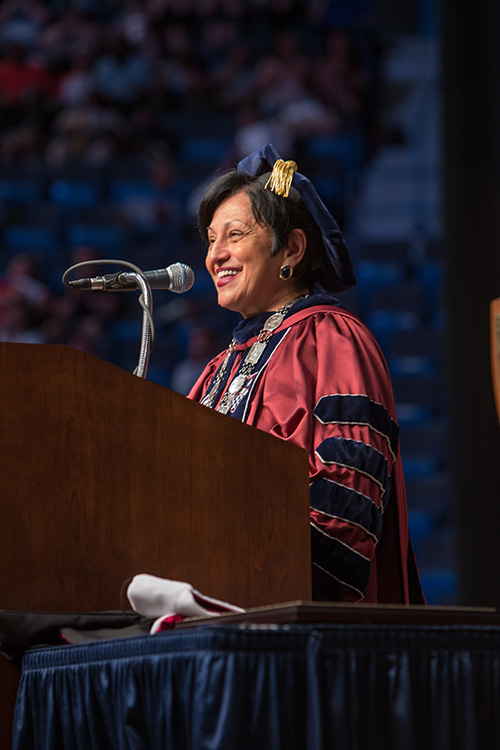
Núñez is confident that Eastern will move forward under new leadership. “Young, gifted scholars coming to Eastern to teach will be catalysts for new ideas, new perspectives and strong learning opportunities for our students,” she said.
“Our brand is strong. As Connecticut’s public liberal arts university, Eastern will have the opportunity to further advance its brand. As we draw students from across the state and beyond, we can build an increasingly national reputation.”
As for her own plans, Núñez will be teaching public policy part time at the Harvard Graduate School of Education. “This will keep me engaged intellectually, inspired by young minds, and it will be fulfilling to help young people earn their degrees. I started my career as a member of the faculty, and I will end it as a member of the faculty!”
Written by Edward Osborn